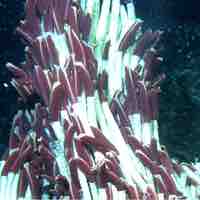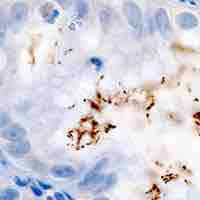Section 10
Chemolithotrophy
By Boundless

Chemolithotrophs use electron donors oxidized in the cell, and channel electrons into respiratory chains, producing ATP.

While there are several mechanisms of anaerobic hydrogen oxidation, organisms can also use hydrogen as an energy source aerobically.

Sulfur oxidation involves the oxidation of reduced sulfur compounds, inorganic sulfur, and thiosulfate to form sulfuric acid.

Ferric iron is an anaerobic terminal electron acceptor, with the final enzyme a ferric iron reductase.

Nitrification is the process by which ammonia (NH3) or ammonium (NH4+) is converted to nitrite (NO2-) and then nitrate (NO3−) by bacteria.

Anammox, an abbreviation for ANaerobic AMMonium OXidation, is a globally significant microbial process of the nitrogen cycle.

Rhodobacter sphaeroides is able to produce hydrogen from a wide range of organic compounds (chiefly organic acids) and light.

Polycyclic aromatic hydrocarbons are potent atmospheric pollutants that consist of fused aromatic rings and do not contain heteroatoms.